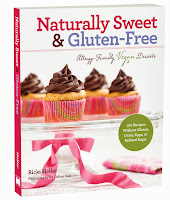I can pretty safely say that I was the first Sacramentan to use Foodspotting, the app for foodies who like to take pictures of their food. Since they launched, I have met the founder, the team, and even been to the Foodspotting headquarters in San Francisco. It's a great app and a popular one.
There are other apps related to food that I do not use. I don't check-in with Foursquare and I very rarely Yelp. I never saw any decent return on Foursquare check-ins and only use it now to get the free valet parking at Ella. As for Yelp, I've always hated having to weed through bitchy comments to find worthwhile and helpful reviews. When it comes to helpful foodie reviews, I prefer those on Urbanspoon.
But I'm now switching over to Dinnerwire. Dinnerwire has it all in one place. I can check-in to the restaurant, take pictures of my food and post them, and write reviews or rate them. This is just the tip of the iceberg as it has more, and will be getting more, functionality soon.
In full disclosure, I'm now working for Dinnerwire and have been working as a consultant for them for the last six months. They are a new app based in Davis and when I started last summer, they were still working on bugs. That's where I came in. As a foodie end user, I told them things that needed to be changed and what I wanted to see in the app that weren't there. Some of my suggestions are currently seen in the app.
For instance, before you could add a picture and then it bounced you out to the main menu. But we all know that we take multiple pictures at a restaurant. Now you can post multiple pictures without getting kicked out to the main menu.
There are other apps related to food that I do not use. I don't check-in with Foursquare and I very rarely Yelp. I never saw any decent return on Foursquare check-ins and only use it now to get the free valet parking at Ella. As for Yelp, I've always hated having to weed through bitchy comments to find worthwhile and helpful reviews. When it comes to helpful foodie reviews, I prefer those on Urbanspoon.
But I'm now switching over to Dinnerwire. Dinnerwire has it all in one place. I can check-in to the restaurant, take pictures of my food and post them, and write reviews or rate them. This is just the tip of the iceberg as it has more, and will be getting more, functionality soon.
In full disclosure, I'm now working for Dinnerwire and have been working as a consultant for them for the last six months. They are a new app based in Davis and when I started last summer, they were still working on bugs. That's where I came in. As a foodie end user, I told them things that needed to be changed and what I wanted to see in the app that weren't there. Some of my suggestions are currently seen in the app.
For instance, before you could add a picture and then it bounced you out to the main menu. But we all know that we take multiple pictures at a restaurant. Now you can post multiple pictures without getting kicked out to the main menu.







.jpg)




























